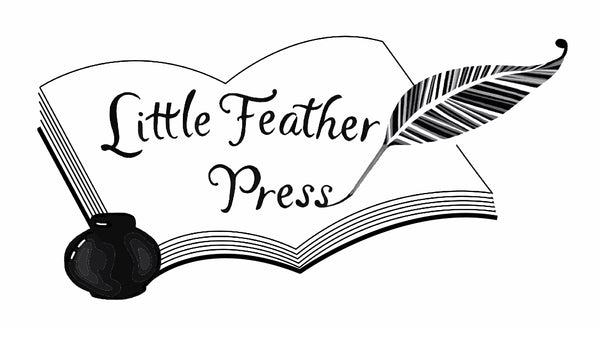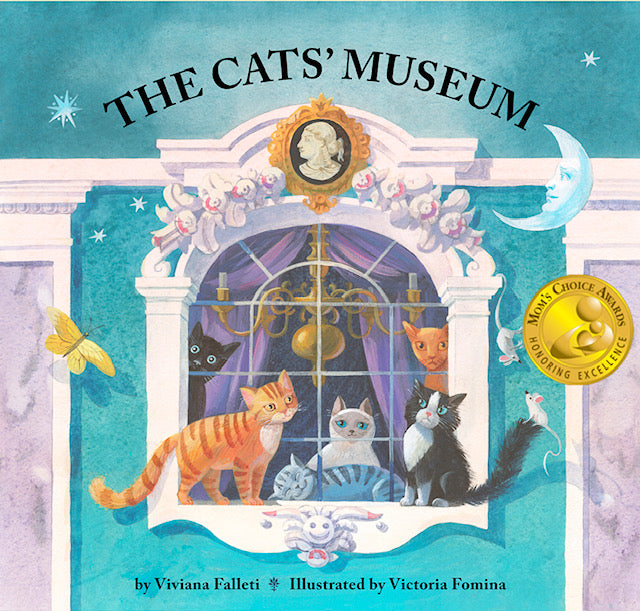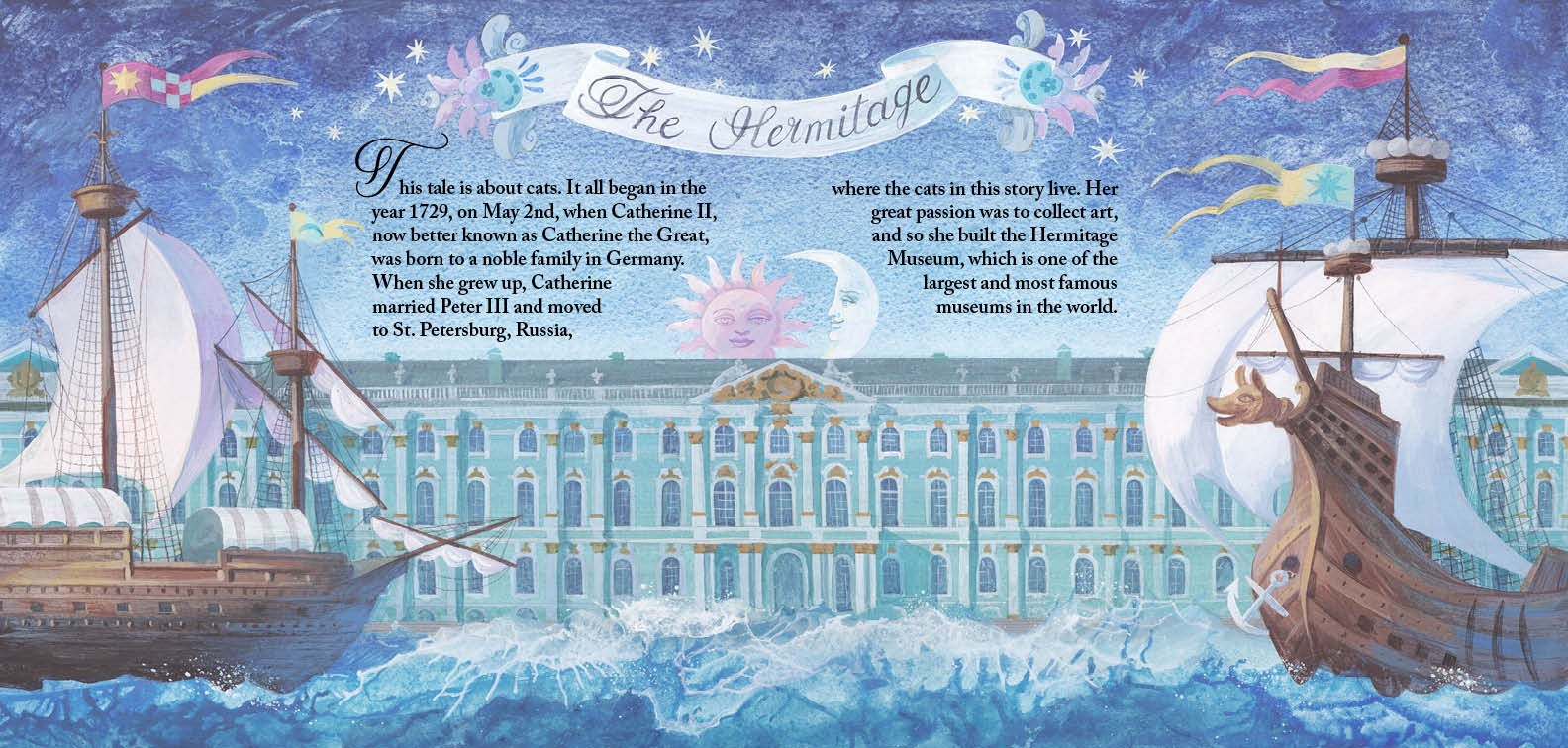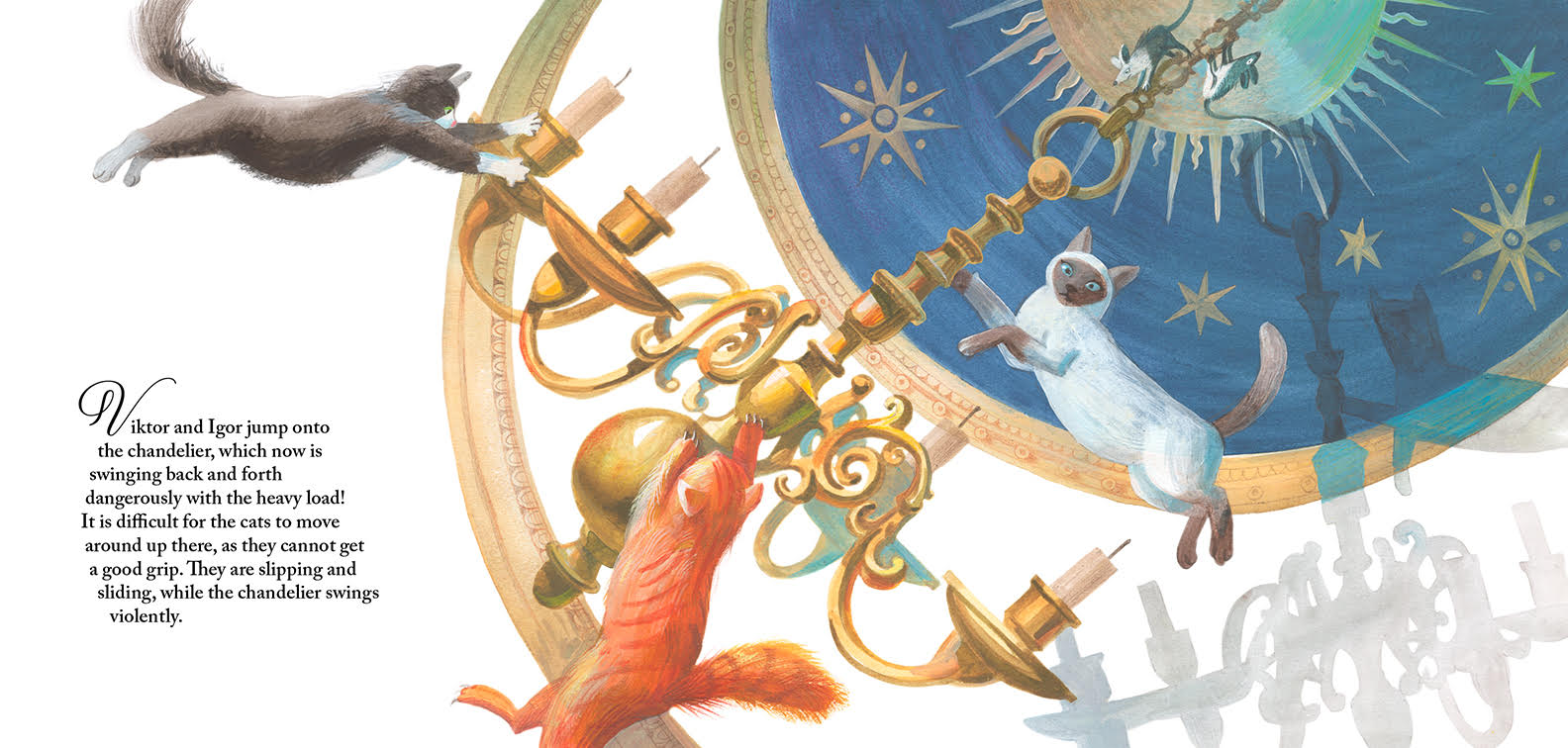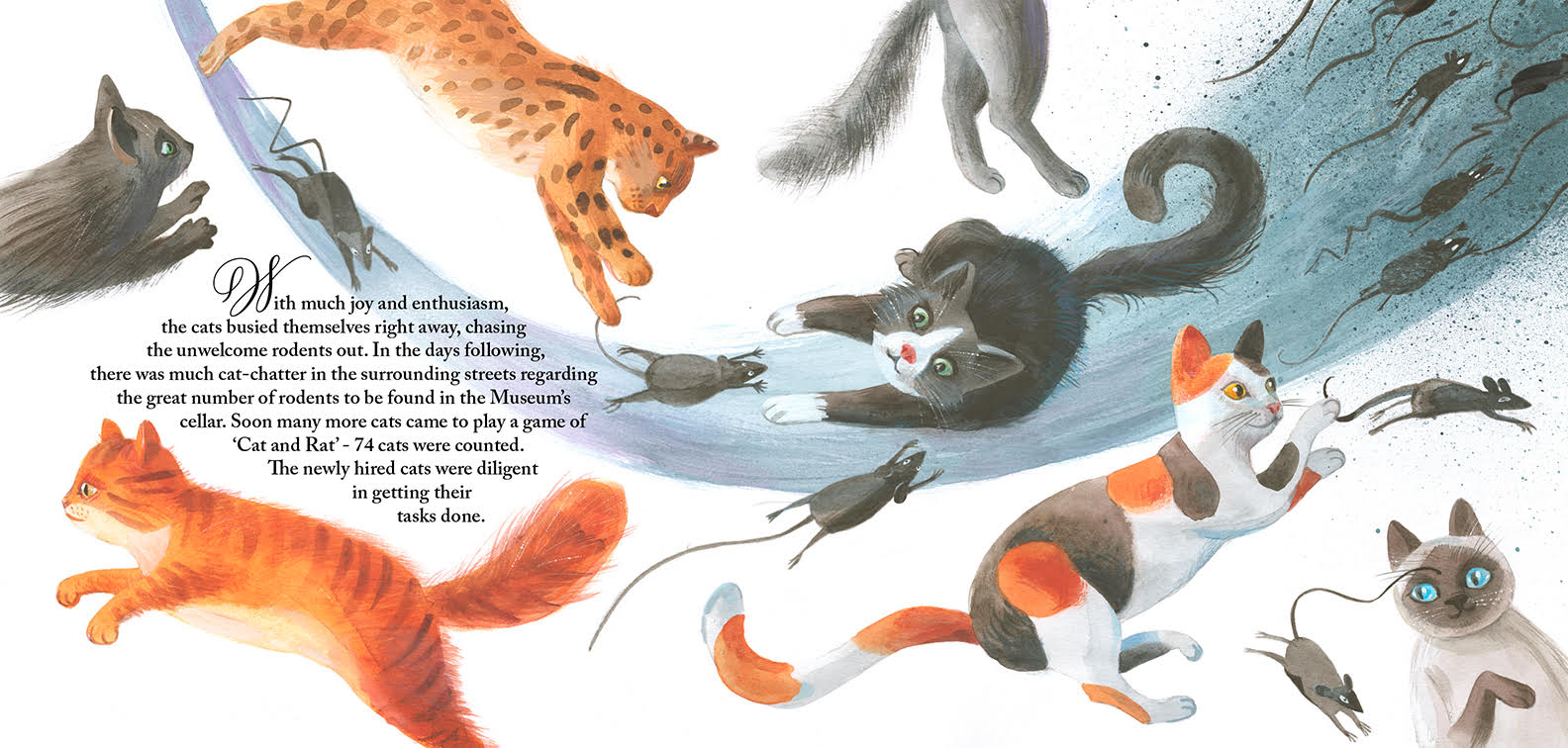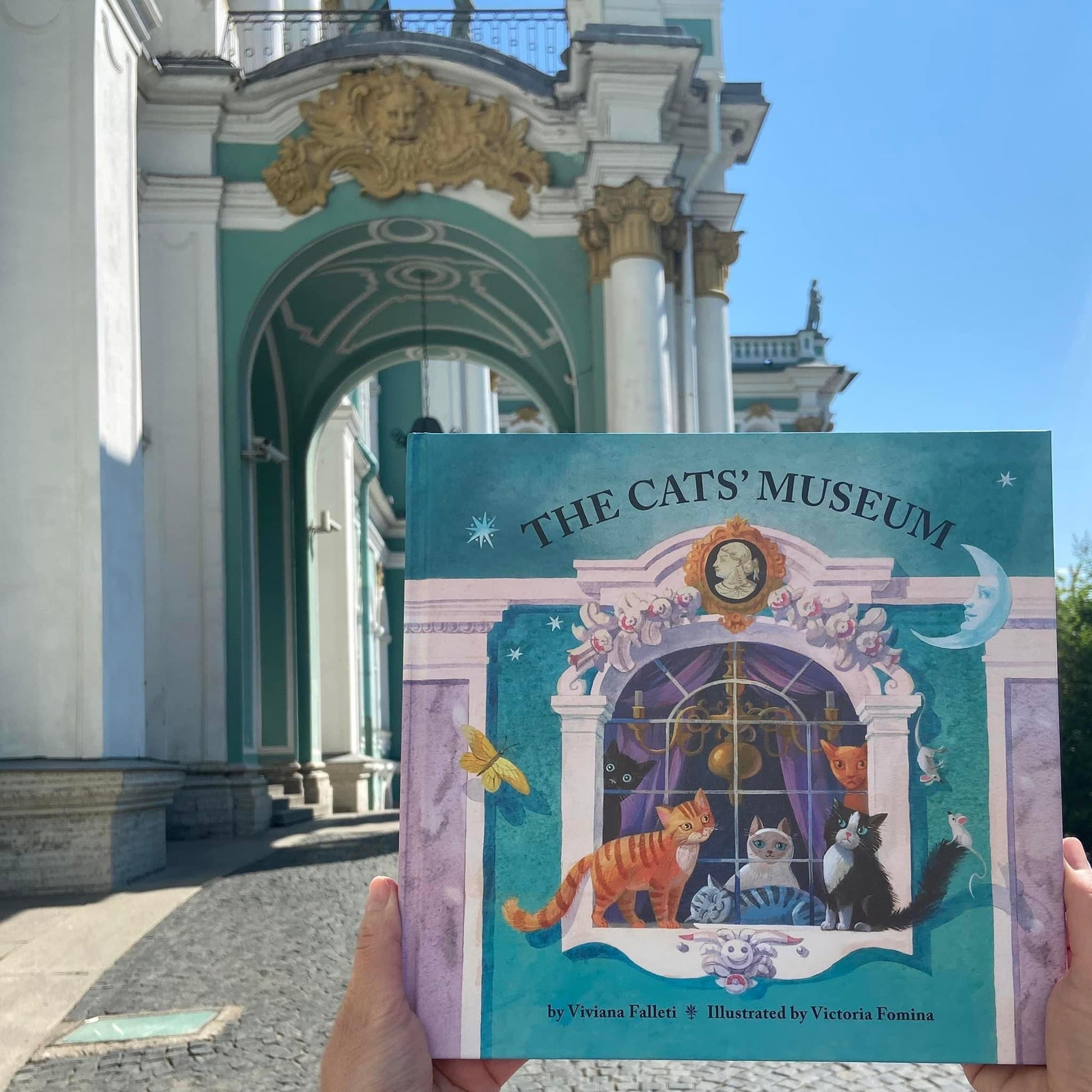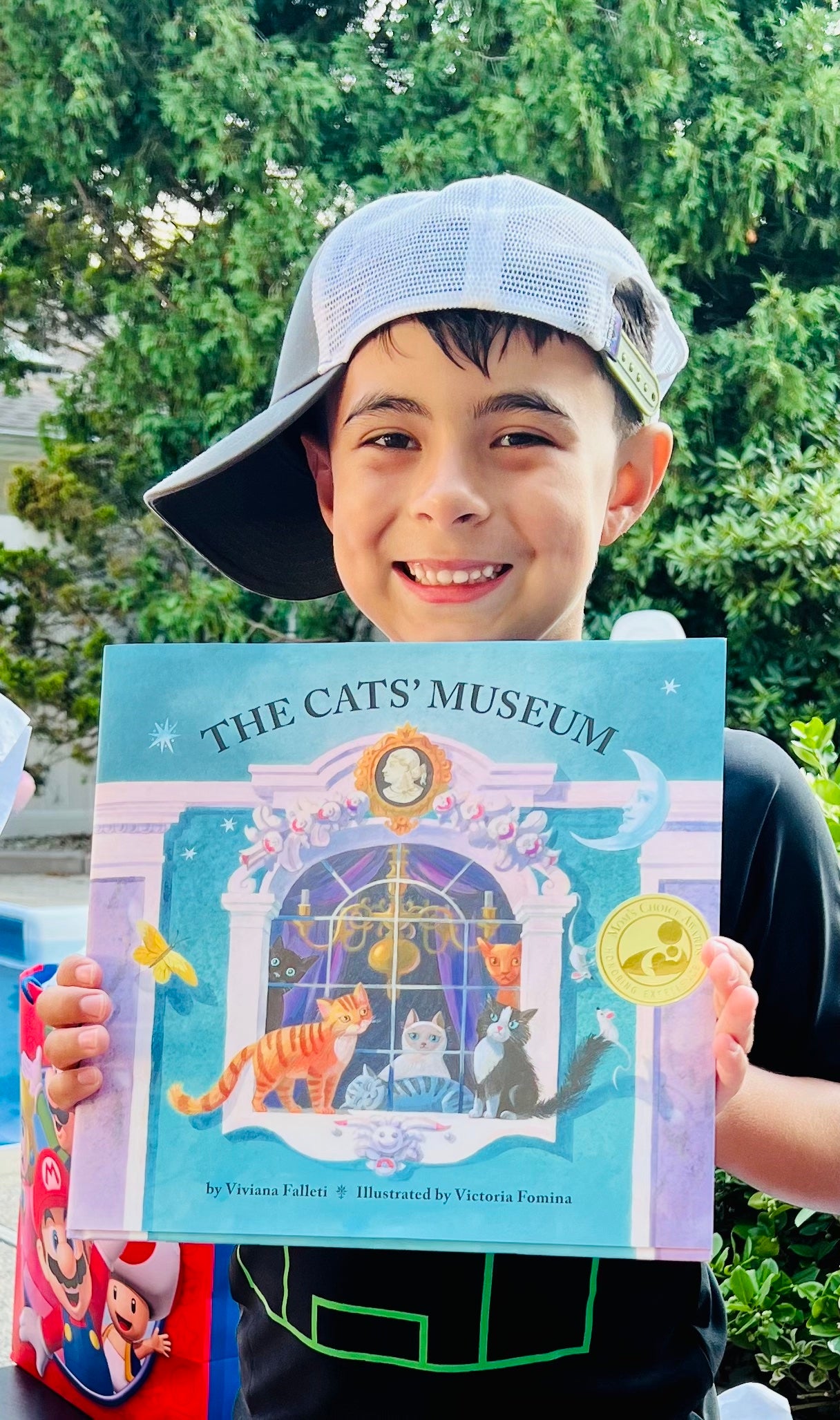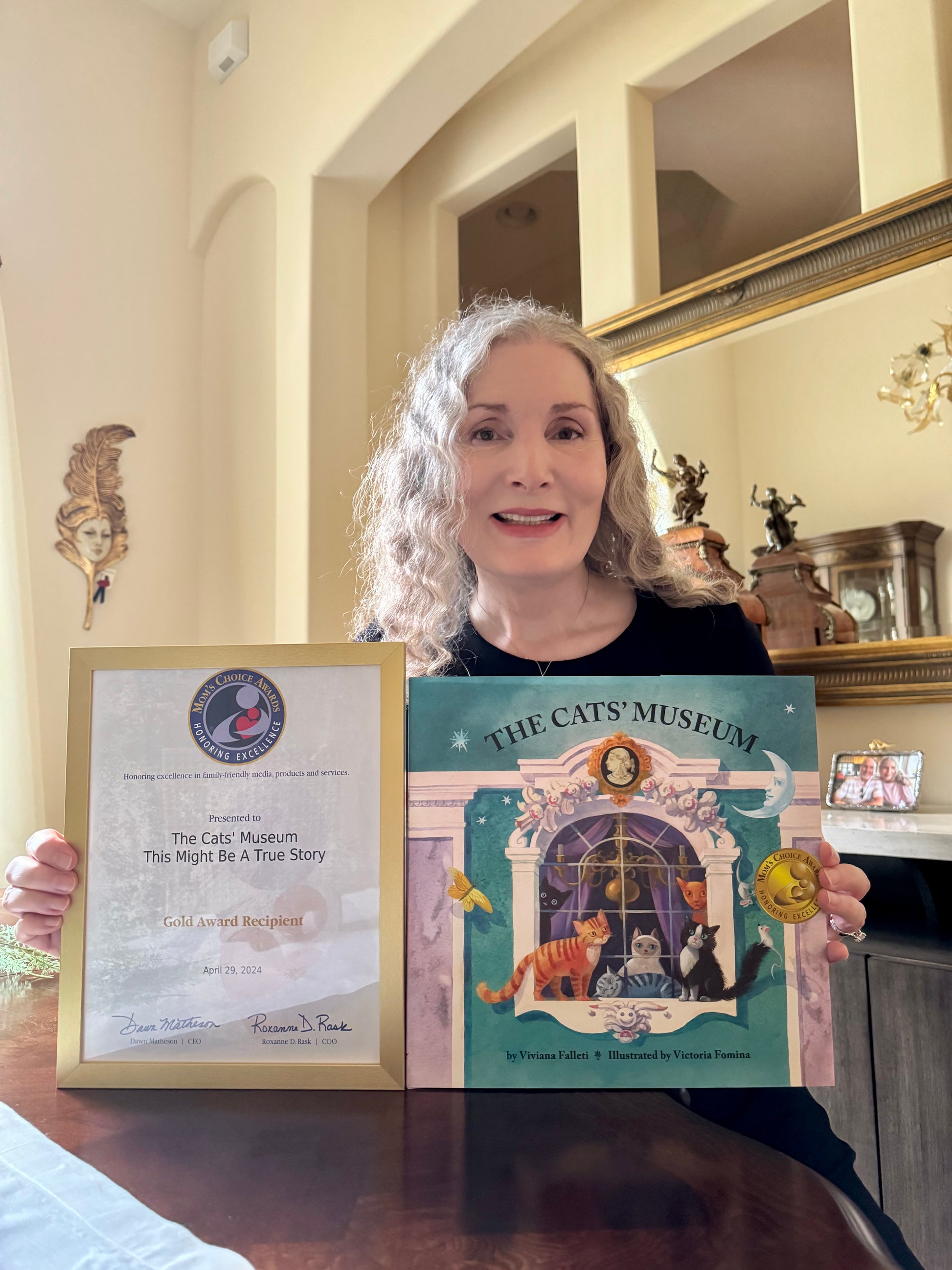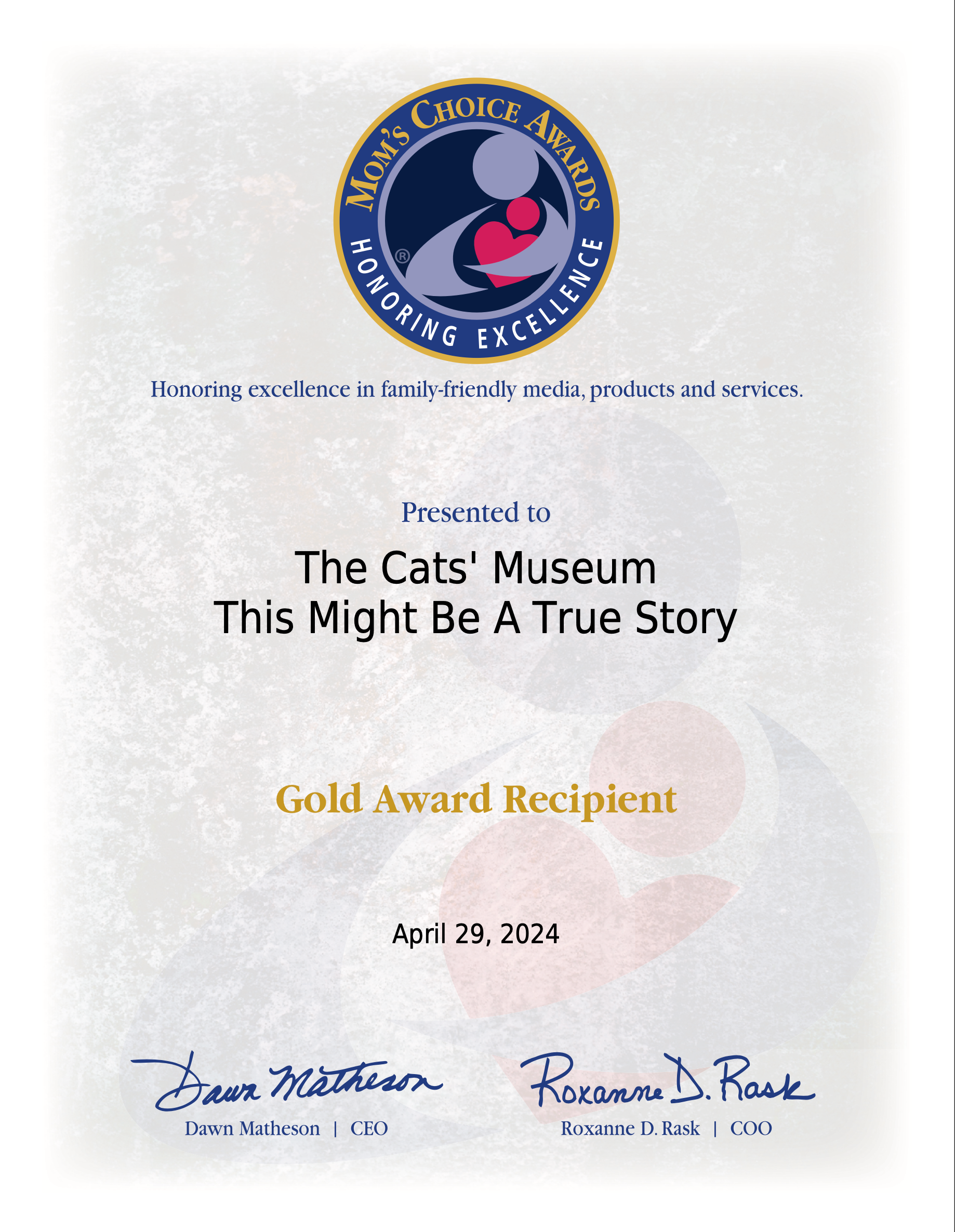THE CATS' MUSEUM—MOM'S CHOICE AWARD RECIPIENT
THE CATS' MUSEUM—MOM'S CHOICE AWARD RECIPIENT
Couldn't load pickup availability
HAVE YOU EVER HEARD OF CATS WORKING AT A MUSEUM ???
In this deluxe, oversized, collectible edition, we read how Catherine the Great, in 1766, recruited stray cats to protect her beloved Hermitage Museum from rodents. Generations later, to this day, cats are still working there, protecting the artwork and doing their zany mischief…tune in for a splash of fun!
This endearing and winsome tale features a cast of felines whose mild-mannered mischief will intrigue young readers and cat lovers of all ages. A touch of history is added to set the scene.
Lesson learned: "We try to obey, but cats will be cats!"
This spunky, historically-based book contains illustrations from the world-famous artist, Victoria Fomina. Victoria won an international award for the illustrations in this book. Publishers Weekly / Booklife and Kirkus have given THE CATS’ MUSEUM great reviews, and it has received the Mom’s Choice Award.
Just for your info, this is a high-quality, deluxe, collectible, hardcover, oversized book (11” x 10.5”). This larger size makes the exquisitely-detailed illustrations even more fascinating and engaging.
Little Feather Press is becoming the go-to place for the parent who is hungry for wholesome and for better books. Happy reading!
Share

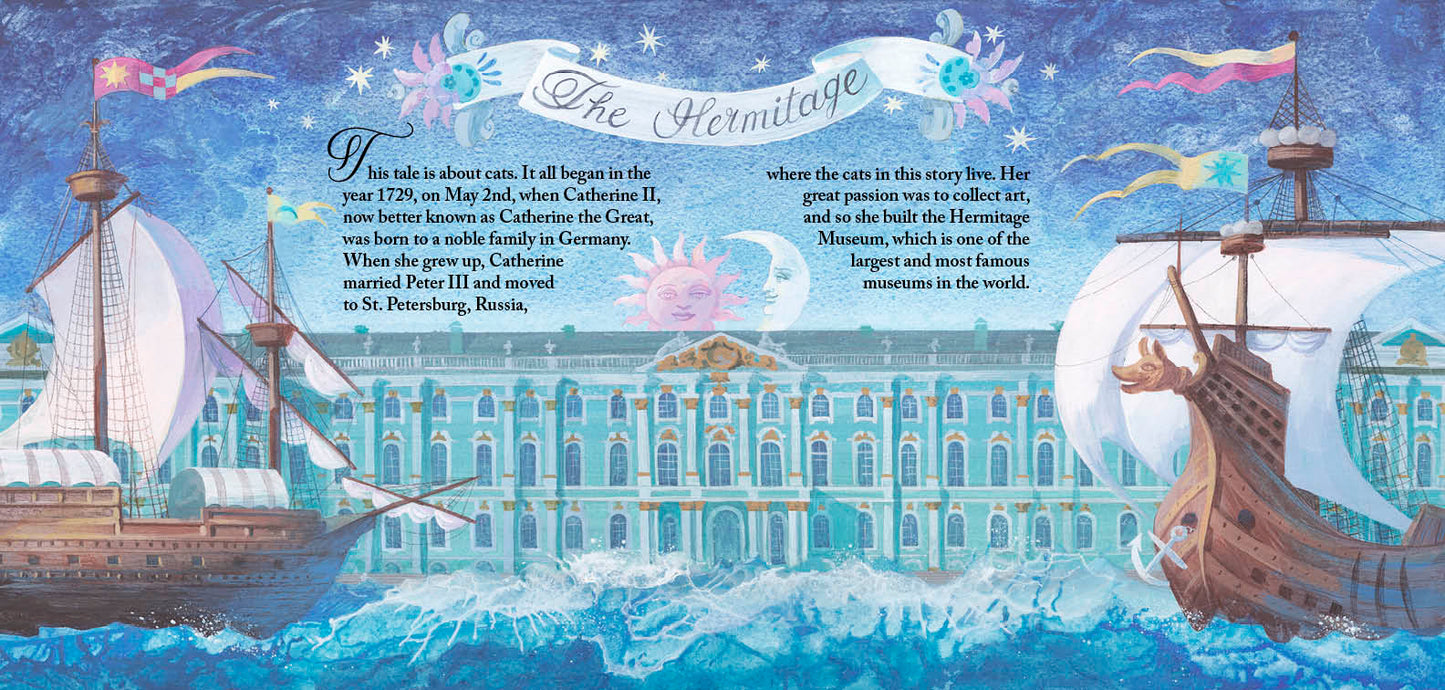
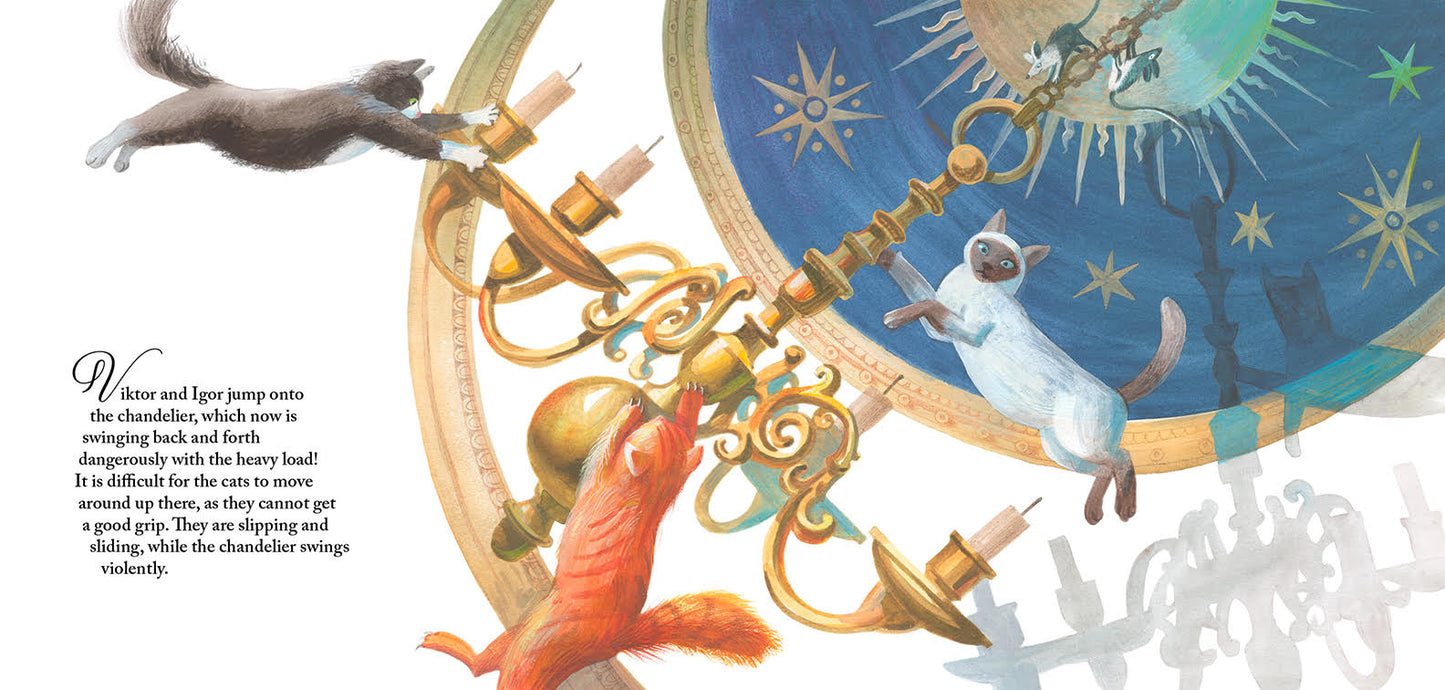
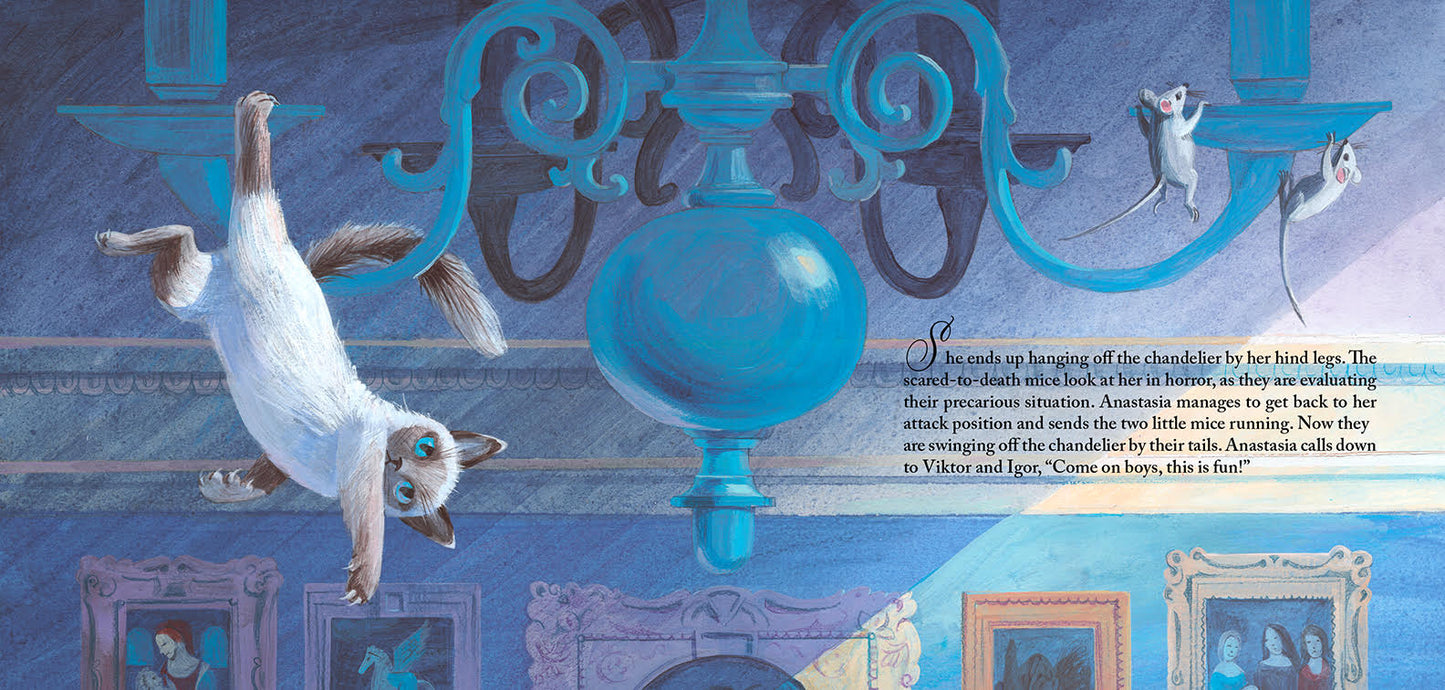

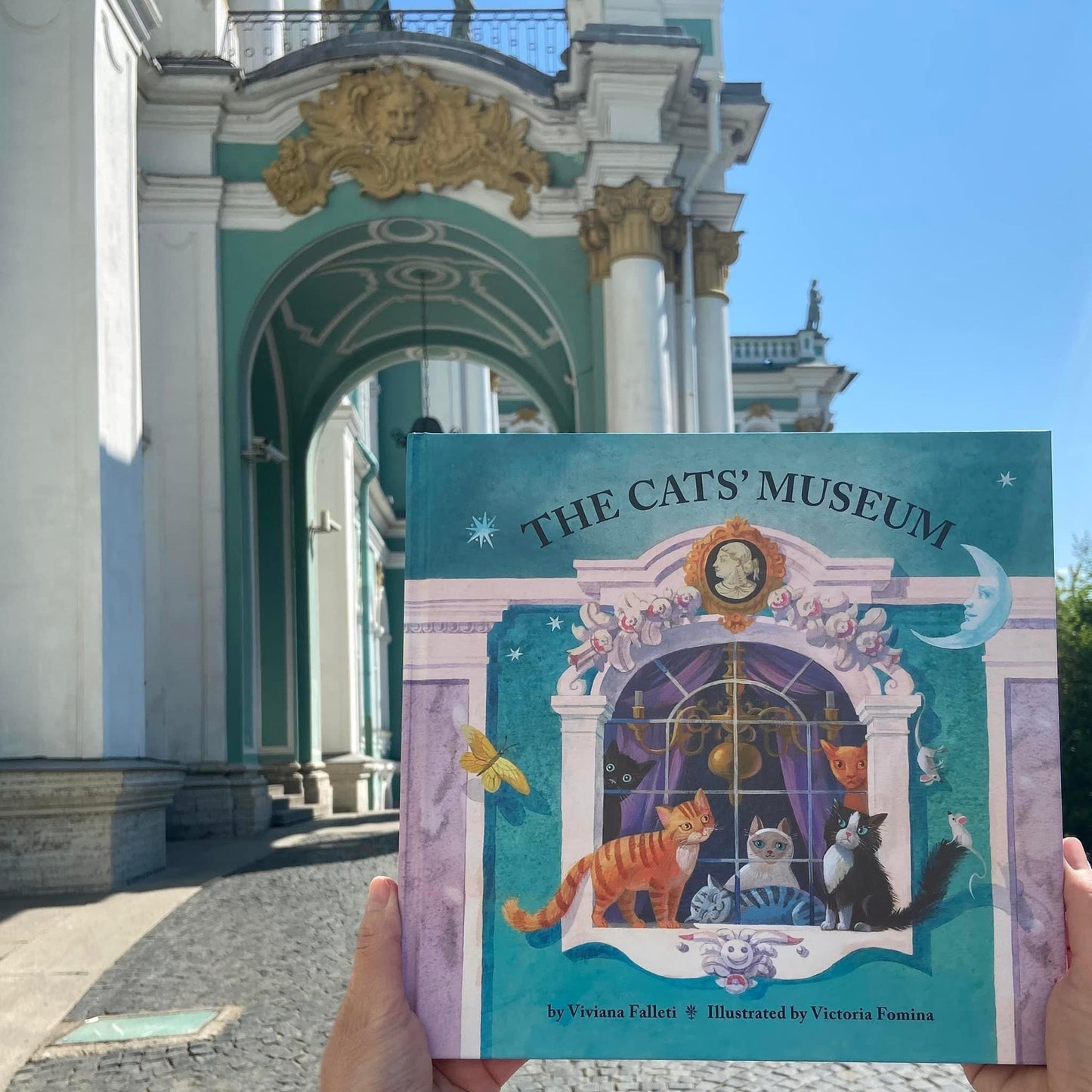
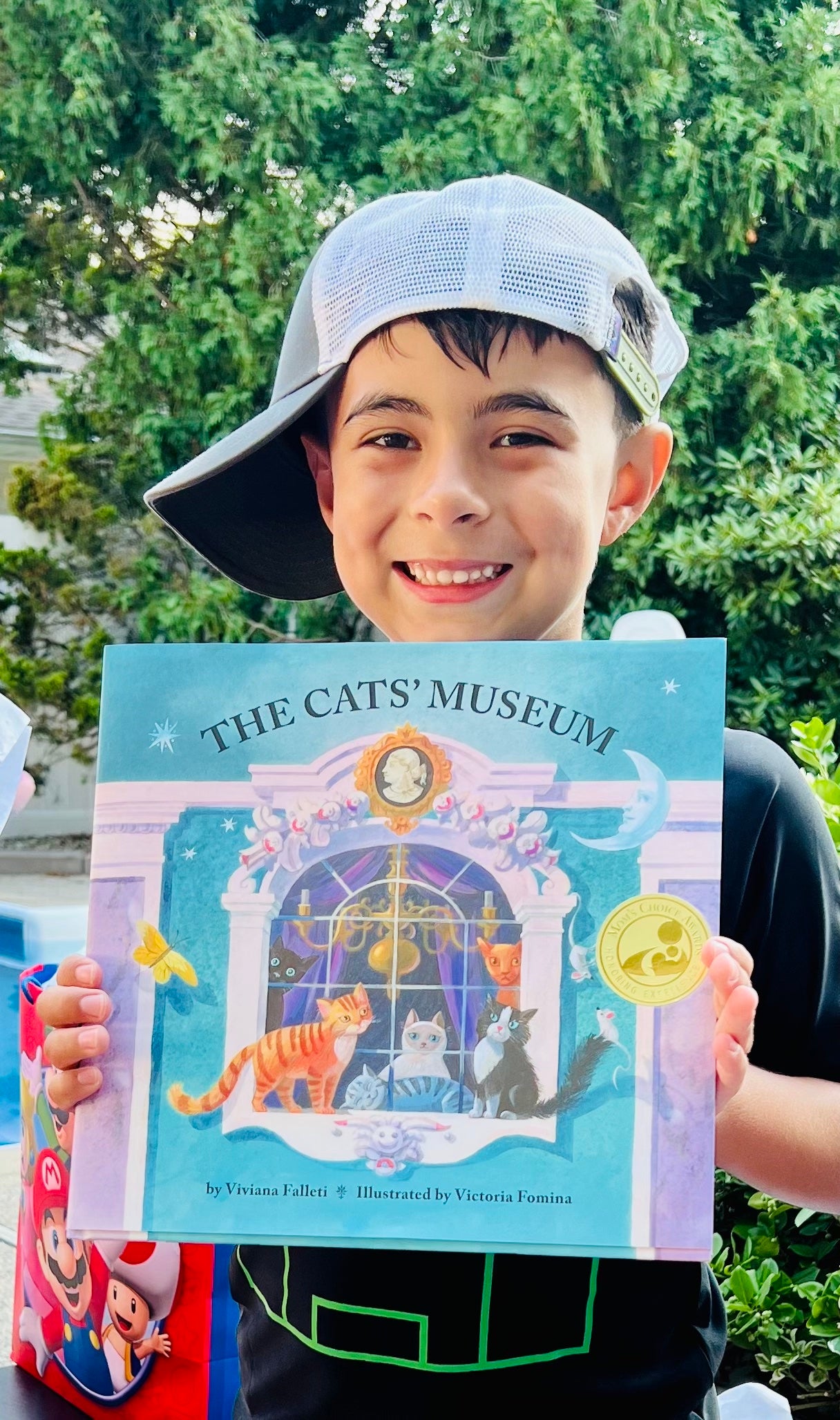

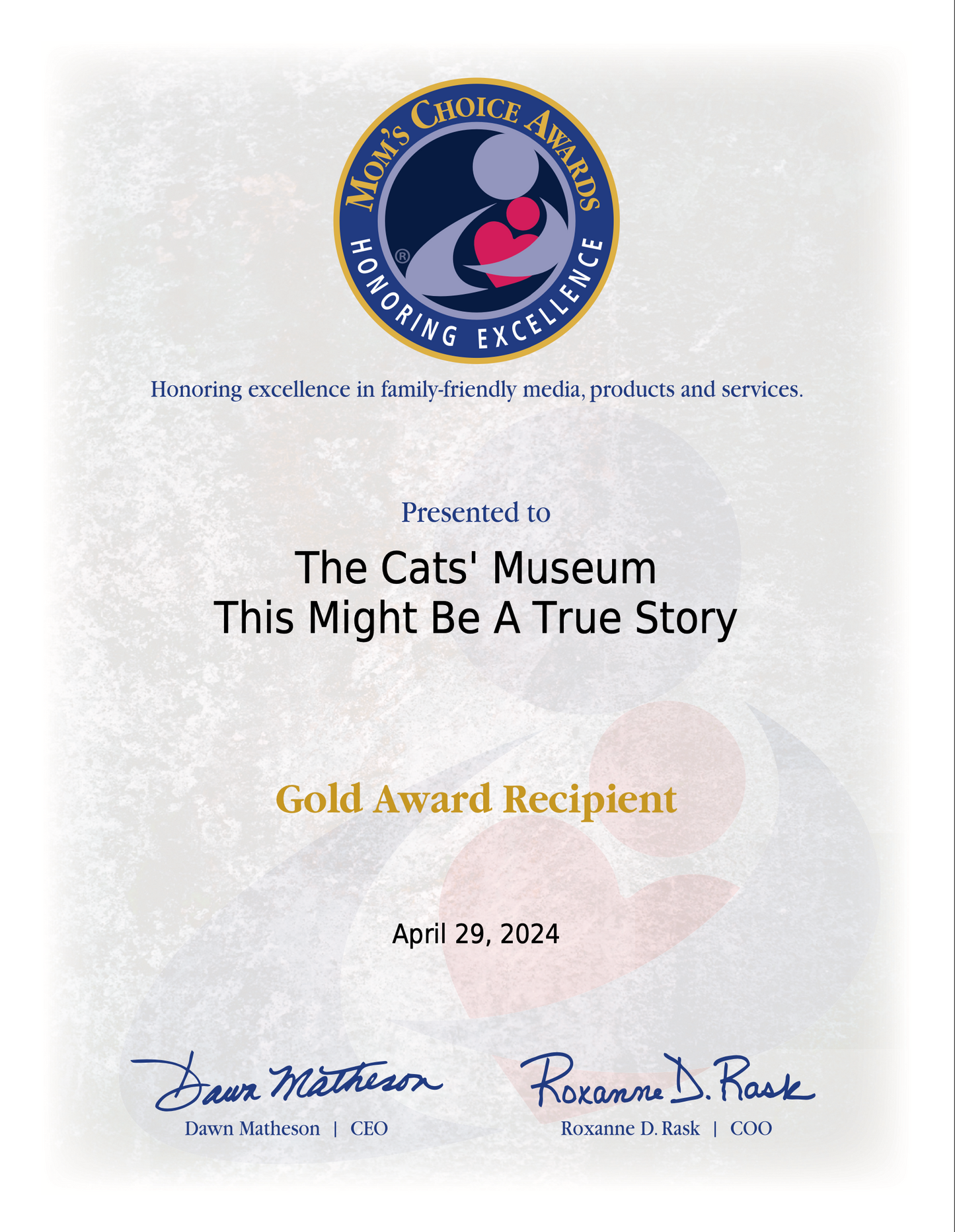
Notable Book Reviews
-
PUBLISHERS WEEKLY BOOKLIFE REVIEW
This encouraging picture book for children from Viviana Falleti (The Cats’ Museum) introduces an orange-striped tabby cat named Antonio, who learns the value of perseverance to achieve his dream of being a circus star. Born on an abandoned gondola on the Grand Canal in Venice, Antonio survives a rough-and-tumble childhood and a great many cat fights. As a young adult, he is approached by a clown who introduces himself as Sir Maximus and offers Antonio a chance to try out for the Circus of Cats. Delighted, Antonio walks with a spring in his step to the audition, where he is given the chance to join the Circus on a trial basis.
On the night of his first performance, Antonio is excited as he takes the stage. Unfortunately, his routines don’t exactly go to plan—in one instance, he trips and launches himself into the audience, and another time, he accidentally claws the back of a clown, and so many more mishaps happen. Afterwards, Antonio slinks away, embarrassed, certain that his brief career as an acrobat is over. The next day, however, his new friend Lulu shows up to revive his flagging spirits and remind him that everyone makes mistakes, especially when they are learning something new. This gives Antonio the courage to return to the Circus and try again, which will encourage kids to give themselves the same kind of grace.
Victoria Fomina’s dreamy illustrations show Antonio and his fellow circus performers wandering and wheeling through a stylized imagination of Venice, complete with historic architecture, curling blue waves, and the moon hanging large and low in a cerulean sky dotted with stars. The vibrant layouts of lively, multicolored cats leaping through hoops, balancing on blocks, and riding rocking horses in frilly gowns will intrigue and captivate. Ultimately, kids will get a boost from Antonio’s tenacity, as they encounter and overcome their own challenges.
Takeaway: A cat learns the value of perseverance to achieve his dreams.
Not just for the kids - the whole family loved it!
I love children's books, especially because they are fun to read about, and their illustrations are fascinating and enchanting. The Cats' Museum by Viviana Falleti is among these books that do not fail to entertain even adults like me. In this book, we are shown a story of stray cats who were hired to protect the Hermitage Museum of Catherine the Great. The year was in 1766. I didn't expect to love this story. It was charming and touching at the same time. I love that I connected well to it. And with that, I am sure that children will love this as much, without a doubt. It was well-narrated, and the illustrations are top quality. I would definitely recommend it!
As a dedicated cat lover, I find it wonderful to see books like this that encourage little ones to pay attention to history and felines! This book, taking place at the Hermitage Museum in St. Petersburg, Russia, tells stories about cats based on the true tale of Catherine the Great, who loved cats as much as I do! Her collection of cats started with three, then grew into dozens, all taken care of very well. But they ran the museum, and their stories show up as illustrations and anecdotes in this book in funny tales with lessons to learn!
The Cats' Museum tells us the story of some very special cats who, since the 18th century, have been guarding the works of art at the Hermitage, the famous museum in St. Petersburg. Although their mission is serious, these felines can't help but get into mischief. Through a mix of true story and humor, children will discover how cats have been part of Russia's cultural heritage. Victoria Fomina's gorgeous illustrations make this book even more charming, making it a unique visual experience. An entertaining and educational read for the little ones.
This book brilliantly blends fiction and historical facts. Based on the true story of the Hermitage cats, The Cats' Museum introduces us to a group of felines who not only guard the museum, but have fun in the process. Children will learn how these cats became historic guardians, but always with a touch of humor and tenderness. The illustrations are stunning, making each page a work of art in itself. A book with a message about how little mischief also has a purpose.
$0.00
$7.00
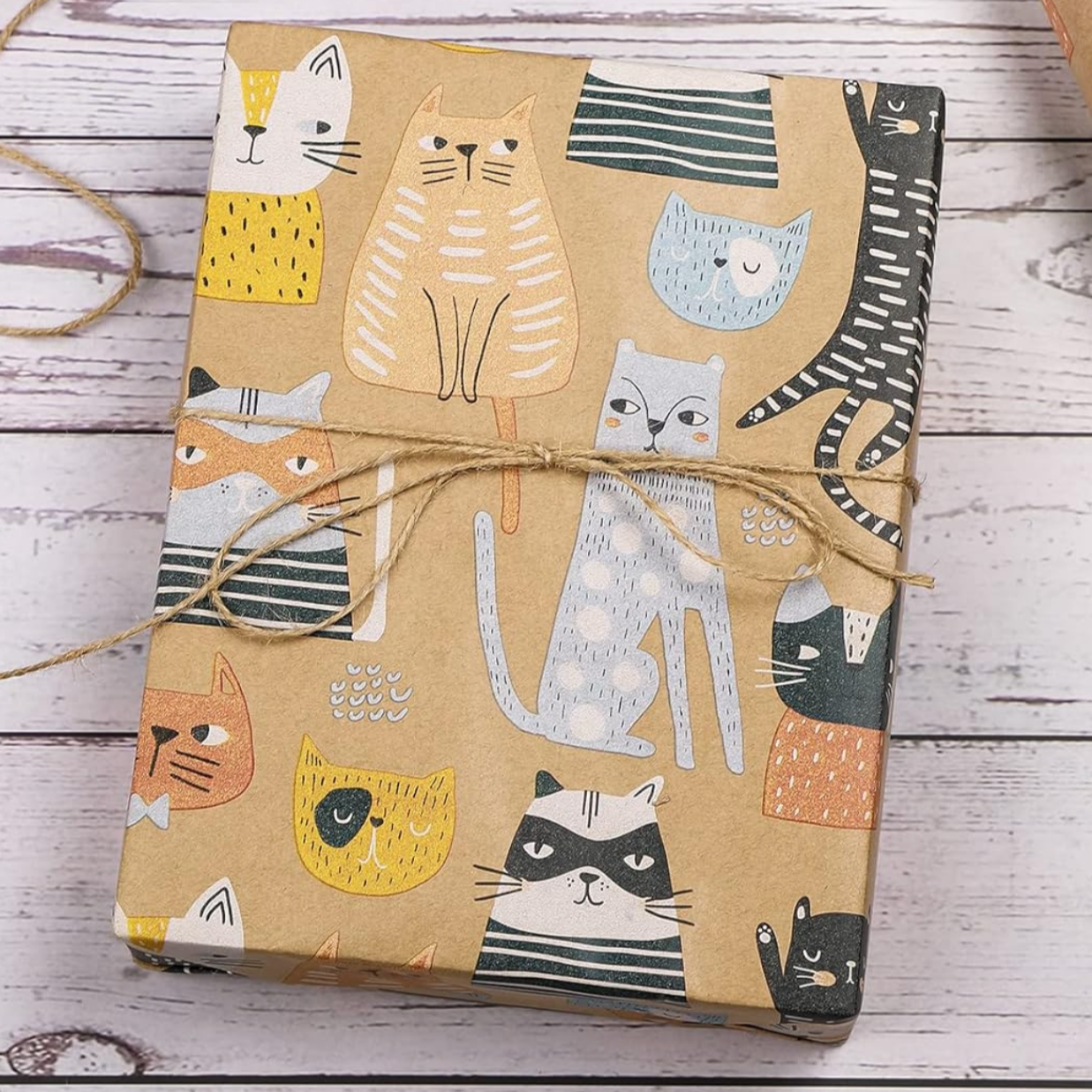
$0.00
$7.00

SS - Product Addons
Select product(s) to see addons appear.
This message only appears in theme editor.